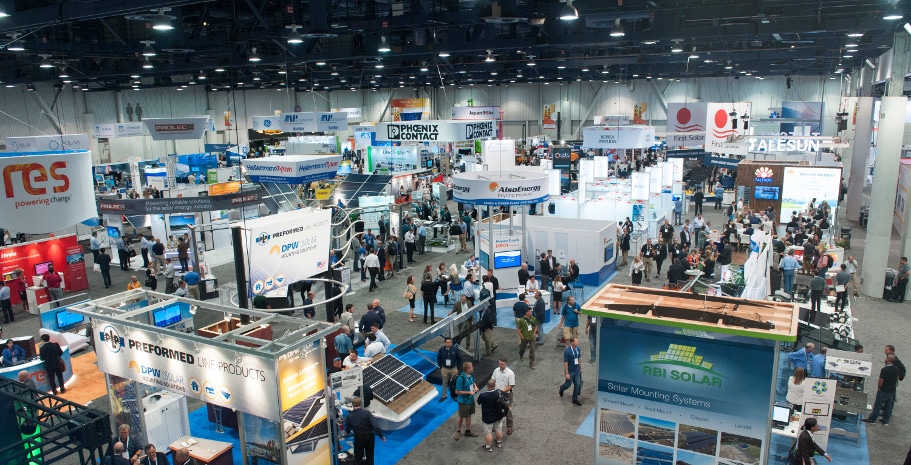Solar Power International (SPI) — the virtual edition — kicked off Sept. 14 with the first of a series of “microconferences” — two 45-minute sessions — that still managed to pack in some provocative and fresh thinking on opportunities and challenges facing the clean energy industry. While the live event has long been a nonstop, multiday marathon resulting in mental overload and networking fatigue, going virtual, with sessions spread out over six weeks, could allow more people to listen in on the top-level discussions on offer.
Themes running across the two workshops on the first day were all about finding new ways to think about the pressing issues of decarbonization and grid modernization, and the need for better communication and collaboration across the industry.
For example, during the opening workshop on accelerating the clean energy transition, Anne Hoskins, chief policy officer at Sunrun, had some sharp ideas on looking at home electrification “as an opportunity to change the way we’ve been putting some technologies in certain boxes.”
“Some states have limits on how big a (rooftop solar) system can be — 100% to 105% of your historical use. We know that people are going toward electrification — converting their appliances, getting an electric vehicle,” she said. “The cost of putting solar on a house is so low. We as a society, and hopefully, the utilities and regulators, will start to think — do we really want to put limits on the amount of energy that can be produced on people’s homes cause it can provide for electrification.”
Similarly, Brandon Smithwood, director of policy for Dimension Renewable Energy, an Atlanta-based developer, called on the solar industry to prioritize its involvement in grid modernization proceedings now going on across the country. Speaking at the second workshop on stakeholder engagement, he said, figuring out how solar and storage can become grid assets “is what is going to define the replacement of net metering.”
“You have to care,” Smithwood said. “If you don’t, it’s going to come back to bite us all as a distributed energy resource industry.”
Communication and collaboration
With uncontrolled wildfires now scorching millions of acres — and taking dozens of lives — on the West Coast, calls for regulatory reform and for industry stakeholders to work together were more pragmatic and urgent at both sessions.
Carlos Nouel, vice president for advanced metering infrastructure and grid modernization at National Grid, said that ensuring a broad range of stakeholders is critical, but smaller, informal meetings outside official regulatory proceedings can allow “more open and frank conversation.”
The regulatory process” is tough,” he said. “Everyone has different motivations; everyone has different views. When you’re in a formal proceeding, people tend to be really careful with what they say, how they position certain arguments. When you do more private settings, people feel comfortable in saying, ‘Look, I don’t like the way you’re thinking about that technology, and this is why.’ It makes for a much better dialogue.”
Accelerating the clean energy transition also means having a clear focus on where the industry needs to go — and moving beyond standard arguments about market competition — said Hoskins.
“Let’s not spend the year to come on fighting over cutting back net metering,” she said. “Let’s find a way to work together on the more exciting opportunity sides of how do we do grid services together. How do we actually bring these systems together and reduce expenses and upgrades to the grid? We all owe it to our joint customers to try to look forward rather than continuing to fight each other in competition.”
***
K Kaufmann will continue to file updates from SPI for pv magazine over the next six weeks.
This content is protected by copyright and may not be reused. If you want to cooperate with us and would like to reuse some of our content, please contact: editors@pv-magazine.com.








By submitting this form you agree to pv magazine using your data for the purposes of publishing your comment.
Your personal data will only be disclosed or otherwise transmitted to third parties for the purposes of spam filtering or if this is necessary for technical maintenance of the website. Any other transfer to third parties will not take place unless this is justified on the basis of applicable data protection regulations or if pv magazine is legally obliged to do so.
You may revoke this consent at any time with effect for the future, in which case your personal data will be deleted immediately. Otherwise, your data will be deleted if pv magazine has processed your request or the purpose of data storage is fulfilled.
Further information on data privacy can be found in our Data Protection Policy.